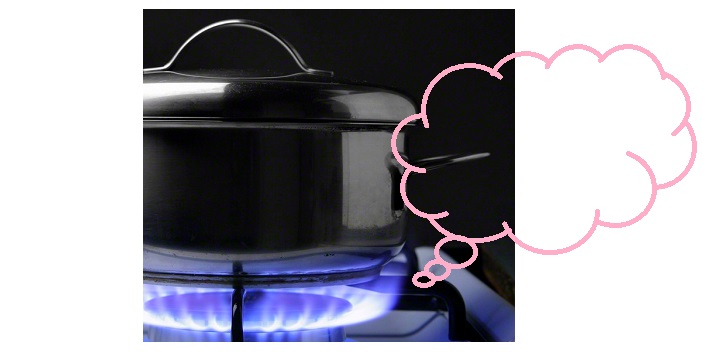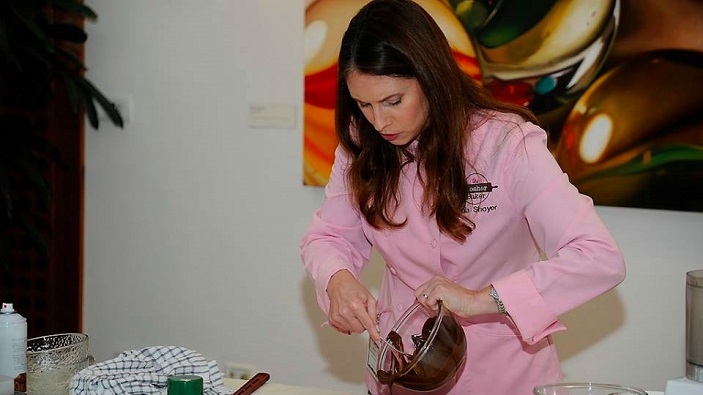
The Jewish High Holidays are a time when family and friends come together to share a meal and celebrate the new year. Paris-trained pastry chef, Paula Shoyer created the essential baking book for that provides desserts and breads perfect for any Jewish holiday or dinner. THE HOLIDAY KOSHER BAKER has desserts that follow the latest trends but also recipes that remind us of those our grandmothers used to make – but with Paula’s distinctively modern and healthier twist.
Even modern Jewish bakers gravitate towards traditional Jewish recipes when they bake for Rosh Hashanah. Maybe it is because Rosh Hashanah, one of the most significant holidays of the Jewish calendar, deserves baked goods that are central to the rich Jewish culinary tradition. These classics include rugelach, strudel, babka, honey and apple cakes, and, of course, round challahs.
“I have always tried to honor tradition, because I want my children to grow up appreciating classic Jewish food, but I have tried to vary the recipes to make them more interesting to a modern audience,” Paula explains. Paula’s take on babka are mini babka bites, she turned honey cake into crunchy biscotti and below recipes for a strudel that combines fresh and dried fruit, and challah rolls filled with the classics: apples and honey.
This New Year, sweeten up your dinner table with two of Paula’s delicious recipes:
(Recipes from The Holiday Kosher Baker by Paula Shoyer Sterling / November 2013)
Apricot and Berry Strudel
Makes 2 rolls, serves 10
For this recipe, I took apple strudel, a delicious dessert that has been absent from holiday tables since my childhood, and instead substituted berries and dried fruit for the apples. You could also make this dessert with plums, or substitute dates or dried figs for the apricots. You will have enough filo to double the recipe and can easily double the filling to serve more people. I always thought the filo came in large boxes and needed trimming, but recently learned that it also comes in smaller, about 8 X 12-inch, sheets. They are easy to work with and were used to make the cute rolls pictured here.
1 cup dried apricots, chopped into 1/3- inch pieces

1 ½ cups (6 ounces) blackberries or blueberries
3 tablespoons sugar
1 tablespoon cornstarch
1 pound filo dough (8 X 12-inch sheets), thawed according to package directions
Spray oil
Preheat oven 350°F. Line a jelly roll pan with parchment. Set aside. Place the chopped apricots and berries into a medium bowl. Add the sugar and cornstarch and toss lightly. Set aside.
Have ready a clean, damp dish towel. Place a large piece of parchment paper on the counter. Take the filo out of its package and unroll. Separate one sheet and place on top of the parchment. Spray with the oil. Place a second sheet on top and spray again. Repeat with two more sheets. Cover the remaining filo with the damp towel.
Place ½ of the filling along the long end of the filo, two inches from the edge. Fold the right and left sides (the short sides) in one inch. Starting from the side with the filling, roll up tightly until you have a long log. Place on the baking sheet. Repeat to make another log.
Bake for 40 minutes, or until lightly browned on top. Let cool and cut into two-inch slices. Serve warm or at room temperature. Store covered at room temperature for up to two days. Reheat to serve.
Apple and Honey Challah Rolls
Makes 24 rolls
I filled these delicious rolls with cooked apples and honey, which we eat at the beginning of the meal and wish everyone a sweet new year. Almost every year on Rosh Hashanah I host at least 25 people in my home. I give each guest their own small plate with a challah roll, apple slices and small bowl of honey to save some of the time that slips away when passing these essential holiday elements around the table. Perhaps I invented these challah rolls that are filled with sautéed apples and honey to further streamline the entire beginning of the meal?
Dough
1/2 ounce (2 envelopes) dry yeast
1/2 cup warm water
1 cup boiling water
½ cup cold water
½ cup plus 1 teaspoon canola oil, divided
1 tablespoon salt
2/3 cup plus 1 teaspoon sugar, divided
3 large eggs
1 teaspoon pure vanilla extract
2 teaspoons cinnamon
6 ¼ to 6 ½ cups bread flour
Apples
5 Gala or Fuji apples
2 tablespoons oil
1/3 cup light brown sugar
1 tablespoon honey
2 teaspoons cinnamon, divided
2 pinches nutmeg
Glaze
Reserved egg plus 2 teaspoons water
1 tablespoon honey
Place 1/3 cup warm water into a liquid measuring cup. Add the yeast and teaspoon sugar and mix. Let sit five minutes, or until thick. Meanwhile, in a large mixing bowl, place 1/2 cup of the oil, salt and 2/3 cup sugar. Whisk well. Add the boiling water and whisk to dissolve the salt and sugar. Add the cold water and mix again.
Beat the eggs in a separate bowl and add to oil mixture, reserving one tablespoon to brush on the loaves. Cover the reserved egg and place in the fridge. Add the vanilla and cinnamon to the bowl and whisk in. Do not worry that the cinnamon does not dissolve; it will mix in later. When the yeast bubbles, add the yeast mixture to the bowl and stir.
Add 6 cups of the flour, one cup at a time, mixing the flour in completely after each addition. You can use the dough hook in a stand mixer. Place the dough on a floured surface and knead until smooth, adding flour a little at a time from the remaining ½ cup. The dough is done when you rub your palm across the dough and it feels soft. Shape the dough into a ball. Lift up the dough and add the remaining one teaspoon oil to the bowl and rub all around the bowl and on top of the dough. Place the dough into the oiled bowl and cover with plastic wrap. Let rise one hour.
Meanwhile, prepare the apples. Peel and core the apples and cut into 1/4-inch cubes. Heat the oil in a large frying pan over medium heat. When hot, add the brown sugar, 1 teaspoon cinnamon, nutmeg and apples. Cook for 5 to 10 minutes, stirring often, until fork tender. You do not want them to be too soft. Add the remaining teaspoon cinnamon and honey and stir. Scoop into another bowl and let cool. If any liquid remains in the bowl, strain out before filling the rolls.
Cover two cookie sheets with parchment paper or silicone baking mats.
When the dough has risen, divide into 24 pieces. Roll each piece into a ball and then roll between your hands into an 8-inch strand. Place horizontally in front of you and use a rolling pin to roll the dough until it is about 4 inches wide. Add one heaping tablespoon of apple filling and use your fingers to spread along the dough the long way. Fold one long side of dough over the filling and then roll up to close. Pinch the edges closed, tucking in any apples that try to escape. Tie each strand into a knot, pulling an end through the top to look like a button, or shape into a spiral by coiling the strand around and tucking in the end. Place on the prepared baking sheets and cover with plastic wrap. Let rise 30 minutes.
Preheat oven to 375°F. Take the reserved egg, add two teaspoons water and one tablespoon honey and stir. Brush the tops of the rolls.
Bake for 20 to 25 minutes, or until lightly browned. Store covered at room temperature for up to three days or freeze for up to three months.
 ABOUT PAULA SHOYER
ABOUT PAULA SHOYERPaula Shoyer is the leading authority on Jewish baking. This busy mother of four believes that a healthy diet can include desserts . . . if they are homemade. A former attorney, she graduated from the Ritz Escoffier pastry program in Paris, and now teaches cooking and baking classes across the country and around the world. Paula is the author of the best-selling The Kosher Baker: Over 160 Dairy-Free Recipes from Traditional to Trendy, The Holiday Kosher Baker, and her first savory cookbook, The New Passover Menu released February 2015. Her books are carried in Williams Sonoma, Crate & Barrel and Costco. She is a contributing editor to several kosher websites such as
kosherscoop.com and
jewishfoodexperience.com, and magazines such as Joy of Kosher, Whisk, and Hadassah as well as the Washington Post. Paula has appeared on TV 22 times: Food Network’s Sweet Genius, twice on Home & Family on Hallmark Channel, Good Day New York on FOX, San Diego Living, Daytime, and is a frequent guest on several Washington DC news shows. Paula also serves as a consultant for kosher food companies and bakeries. Paula lives in Chevy Chase, MD.










 ABOUT PAULA SHOYER
ABOUT PAULA SHOYER